The Black Pirate
If one were to compile a list of the most acrobatic and physically gifted actors, it would probably contain Buster Keaton, Gene Kelly, Burt Lancaster and Douglas Fairbanks. Fairbanks, like Keaton, predominately worked in the silent era and, with his wife Mary Pickford, was part of the powerful group (along with Charlie Chaplin and D.W. Griffith) that established the independent production company United Artists. Fairbanks had a long and distinguished career with several notable films including The Thief of Baghdad,, Robin Hood and The Gaucho. Amongst these celebrated films is The Black Pirate, directed by Albert Parker, with Fairbanks as producer, and is a film that hasn't previously been released on DVD in the UK.
The film begins with some intertitles establishing who the pirates were and what they did to merchant ships before moving on to the ship which has been taken by pirates who, now in the process of removing the ship's cargo, have tied the crew to the mast and have led a trail of gunpowder around them leading to several barrels. With the plunder now in the lifeboats and the pirates almost all off the ship, the gunpowder trail is lit and, with the pirates a safe distance away, the ship explodes.
Not everyone perishes in the explosion as a young man and his father make their way to a nearby island and the father, just before he dies, gives a ring to his son. Having buried his father and carved a promise of vengeance against his killers onto a piece of wood, the man notices the pirates stashing their treasure and recovering directions to a haul of buried treasure.
Seeing this as his opportunity for revenge, he approaches the pirate gang and says he would like to join them. When questioned as to why they should let him join them, he boasts of his physical abilities and says he will defeat their best fighter. What follows is a sword fight of amazing reality in 1926 with the two combatants using rapiers with amazing skill and ruthlessness but, of course, our hero prevails and is welcomed into the group. When they tell him what they do to ships, he protests they are wasting one of the most valuable commodities and says it is better to capture the ship and use it for ransom rather than simply plunder the vessel and then blow it up.
In order to prove he is as good as his word, The Black Pirate persuades the pirates to let him try his luck on the next ship and, by disabling the rudder and quickly and quietly boarding the ship, he captures it by himself and, much to the chagrin of the pirate captain, is elected their leader. Recognising the necklace worn by a well-dressed woman on the boat as something only worn by royalty, he says they should get a decent ransom from the ship and the people on board, so a letter is written and several men in the pirate ship take it with them in order to deliver their ultimatum.
Unbeknownst to the Black Pirate, the pirate captain has no truck with hostage taking and simply wants to get the riches and leave and then blowing the boat up so sabotages the delivery of the letter, wins back the affections of his men turn on their former leader, ordering him to walk the plank.
This is swashbuckling fun at its finest and Douglas Fairbanks is such a great screen presence that the film belies its age. It was the very first film shot in (two strip) Technicolor and, with incredible sets and great action sequences, is a great watch. I'm not quite sure how many times I've seen someone in a film or TV show making their way from the crow's nest (or somewhere else high up on the ship) to the deck by sliding down a sail with a knife in one hand, slicing it as they go but had no idea it was taken from The Black Pirate with Douglas Fairbanks doing the stunt.
There have been so many pirate movies made over the years, most of which I haven't seen, that it is impossible to say where this ranks - it is certainly a great deal better than the recent Pirate-themed franchise with the fourth instalment on the way. However, it is a terrifically made film with superb direction, a good story by Fairbanks (writing under the pseudonym Elton Thomas) and acting, great stunts and sets and is utterly entertaining.
The Disc
Extra Features
The first thing I did once the film had finished was to put on the commentary by Rudy Behlmer and listen to his audio essay. As is the case with most of his commentaries, this isn't scene specific and will only be of interest to those who don't mind a commentary track being dry and factual rather than jovial and entertaining. Behlmer has a great deal to say about the film, Douglas Fairbanks' life and career and other related subjects which he covers very well with plenty of details.
The default audio is the original score by Mortimer Wilson but this has a new score by Lee Erwin (which comprises organ rather than orchestral music) which is an interesting alternative without being one that is better than the original, but it is a fascinating interpretation of the on-screen events. They are different pieces of music, both suiting the film well, but I just feel Wilson's composition is more polished and feels more 'natural' with the images.
Shortly after the film was made, in 1930, there was a new 'talkie' version released with the film in black and white and Douglas Fairbanks, Jr providing the narration. This version is also included on the disc but I found it only played for so long before stopping and going back to the 'bonus' menu. Although I had to remember where I was and keep flicking back to the relevant part in the film, I found this to be a fascinating addition but one that shows film sometimes work better without dialogue as there are some quite lengthy gaps and, when Fairbanks, Jr speaks again, I found it quite distracting!
There is also a photo gallery of seven publicity stills and posters that has to be manually navigated but is still worth browsing through..
The Picture
Presented in the original aspect ratio of 1.33:1 and with the two-strip Technicolor adding to the overall look, it is clear this has undergone a significant restoration process as scratches, heavy grain and other blemishes at minimal and it looks like a film shot much later than 1926. Although it works perfectly well in monochrome, the early Technicolor gives it a warm look and emphasises the colours in the costumes, décor and landscapes.
Predictably enough, the costumes are fairly lavish so Princess Isabel (brilliantly played by Billie Dove) has some great dresses and the main pirates are individually dressed so it is quite easy to tell who's who even when they are in a crowd. Some of the ships, built to scale, are absolutely huge which give proceedings a real sense of spectacle, making the action sequences look even more impressive.
There is a remarkable sequence in which a group of men attacked by swimming underwater towards the ship they intend to attack and it is so well filmed and put together that I was surprised to learn that not one frame was actually shot underwater.
The Sound
The score, composed by Mortimer Wilson and conducted in 1996 by Robert Israel, is a terrific piece of music that helps to emphasise the swashbuckling nature of the film along with the burgeoning romance between the Black Pirate and Princess Isabel. It also helps to create tension in those scenes in which one of the main characters is in danger.
The intertitles thankfully haven't been rewritten for this release and are exactly as they were in 1926 (as the film has been taken from the original 35mm negative, restoring the original intertitles) but are still easy to read although the phonetic spelling of a (presumably Scottish) pirate's dialogue is slightly comedic.
Final Thoughts
The Black Pirate is a brilliant piece of silent filmmaking with a superlative performance by Douglas Fairbanks at its centre. The huge boats make some of his stunts and more athletic aspects, particularly when he climbs up a section of a boat, all the more impressive and add to the epic feel of the film that rivals the 1925 version of Ben Hur in terms of spectacle.
The DVD is extremely good with AV quality that is way above average and a decent selection of extra features. Park Circus has made their name by the stellar releases of Charlie Chaplin films and this will only add to their reputation as a distributor that really knows what to do with the silent pictures.
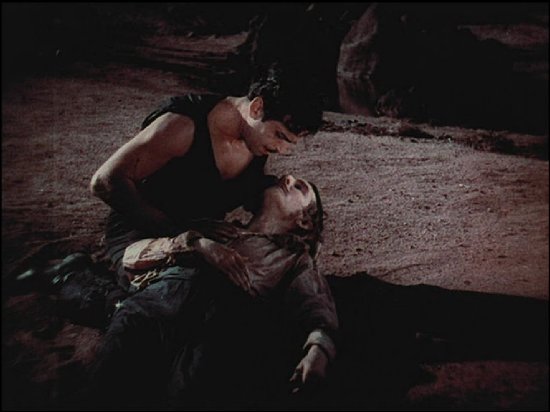
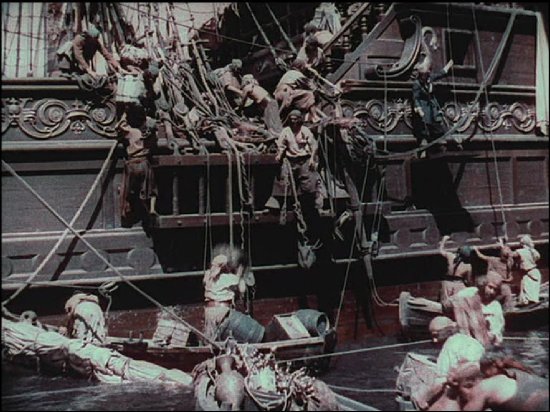
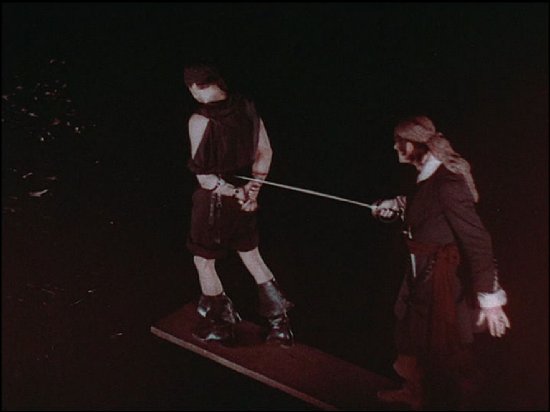
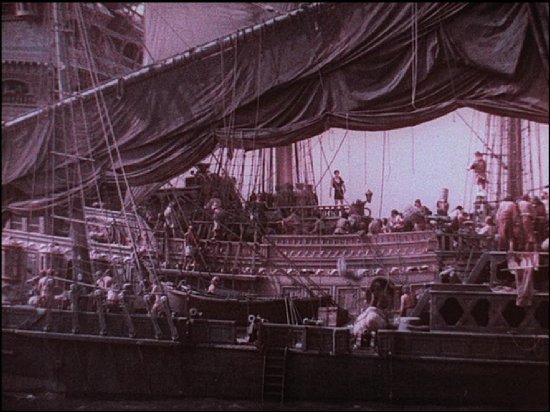
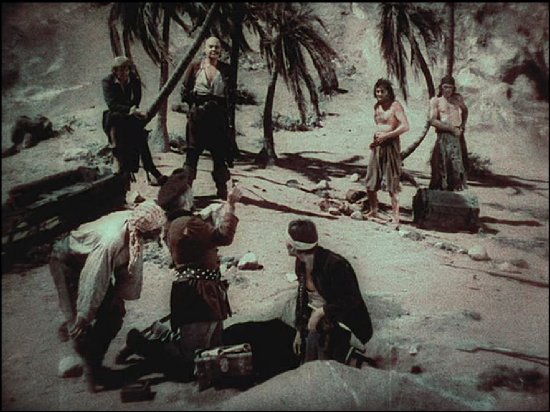
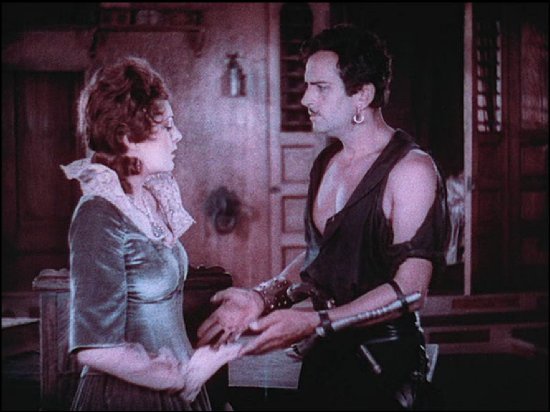
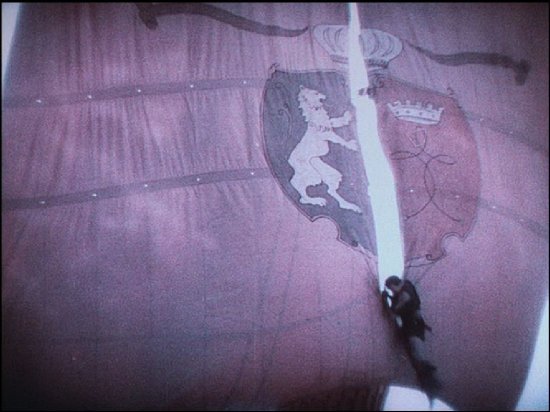
Your Opinions and Comments
Be the first to post a comment!